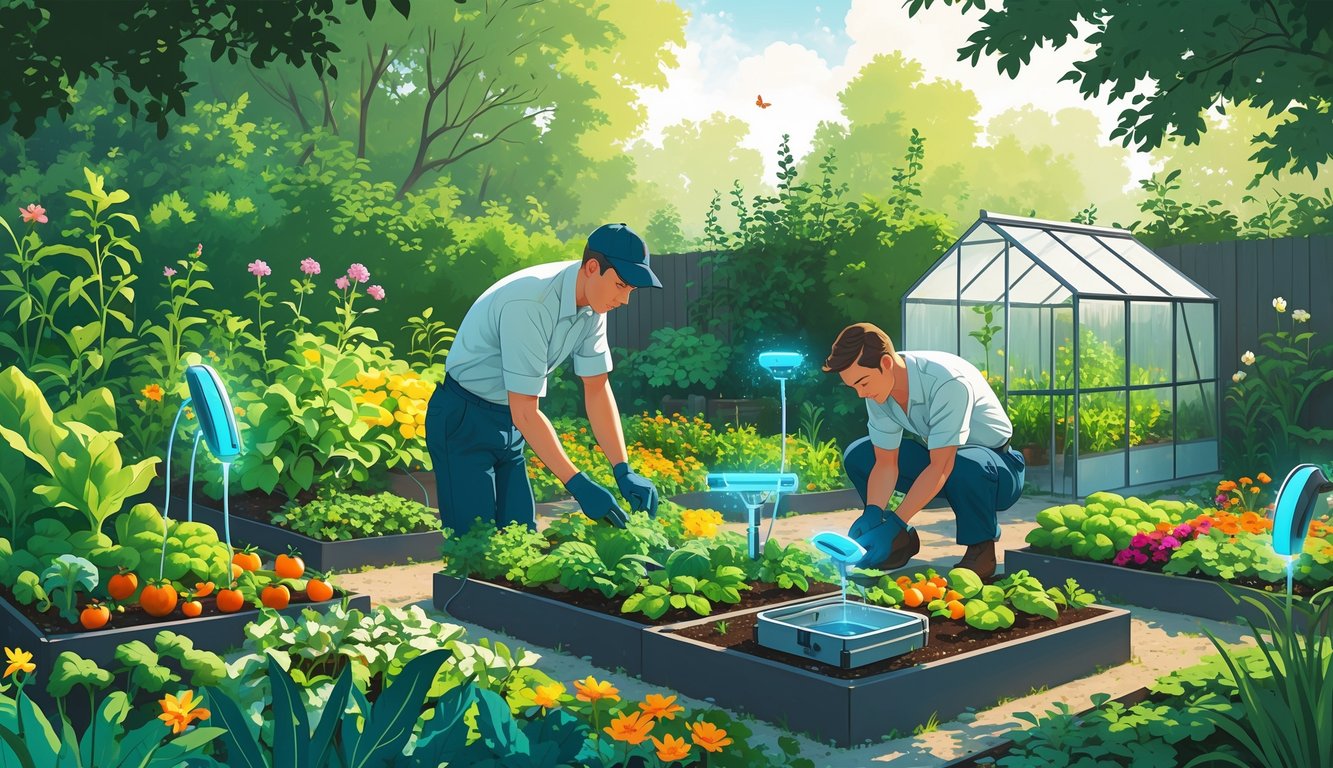
Future Trends in Pest Deterrent Design and Engineering
Snails chewing basil, developers hyping “sustainable” netting like it’s going to save the world—meanwhile, caterpillars are stuck in it half the time. “Sustainable” is basically a marketing word now, and “garden engineer” sounds like someone who’s never weeded a bed in July. I keep waiting for robot ladybugs to be real, not just a trade show gimmick. Eco-friendly? Sure, but it’s mostly what we wish for when we’re tired of chemicals and want something that actually works.
Emerging Eco-Friendly Innovations
Neighbors swap neem oil brands and act like “eco-friendly” means no effort, no smell, and zero aphids. I tried ultrasonic devices—the solar ones that brag about “pet-safe emissions.” They scared off two squirrels and maybe a YouTube reviewer, but slugs? Not a chance. EPA research (2024) says plant-based deterrents cut non-target insect deaths by 44%. Great, but my friend’s dog still dug up every peppermint barrier he tried.
Biodegradable fencing sleeves are a thing now, meant to replace single-use plastics. The trend’s out there, even if it’s half-baked. Biocontrol—predatory nematodes, lacewings—show up at the co-op, but they’re pricey, don’t last long on the shelf, and honestly, where am I supposed to store wasp eggs? Some British garden designer said, “Natural doesn’t mean easier; it just means fewer regulations.” Hard to argue.
Evolution of Garden Engineering Techniques
Data-driven pest mapping, AI garden cameras, all the bells and whistles—garden engineers have more apps than sense. The 2025 market has motion-activated sprinklers, “weather adaptive” pheromone dispensers, QR-coded mulch bags. Real-time sensor feedback promises prevention, not just reaction. But ask a master gardener—they’re still covering strawberries with old sheets at night.
“Wildlife corridors” for luring pests away are trendy in city gardens, but after seeing a raccoon use one as a shortcut, I’m not sure theory matches reality. Engineers are pushing modular raised beds with built-in mesh and moisture controls. Great, if you like DIY projects every season. “Precision” is supposed to mean less spraying, but mostly it means more firmware updates. Sometimes the best solution is still a milk jug over a cabbage.
Frequently Asked Questions
It’s wild—I’ll be stringing up copper mesh, get distracted by a vibration sensor ad, then forget to cover my kale. Pest deterrent designs for gardens? Never actually quiet; something’s always buzzing, blinking, or confusing the squirrels. Neighbors swear by their sonic repeller, but NPMA field experts say it’s all about layered design and maintenance, not a sticker.
What are the most effective environmentally friendly pest deterrents for home gardens?
Neem oil always comes up, but half the time people spray it wrong—greasy leaves, angry bees. Professor Sam Dyson at State U says crop rotation beats most sprays. Diatomaceous earth? Garden clubs rave, but rain turns it to mush. I skip chemicals near pollinator beds—gotta protect the frogs.
Can engineering solutions help reduce noise pollution while controlling pests?
There’s this ultrasonic fence prototype that’s supposed to be “whisper-quiet.” Tried it on my tomatoes—only the neighborhood cats cared. Commercial vibration traps barely shake the soil if you set them up right, but when I tried, the wind set one off all night—so much for quiet. Acoustic panels exist, but only for people with money to burn. My neighbor’s foam board DIY version? Didn’t work.
How long can I expect a professionally installed pest deterrent to be effective in my garden?
Installers claim 12–18 months, show you a warranty card, but I watched a solar grid die after two weeks of clouds. EPA says “hardware life cycles fluctuate wildly depending on exposure.” No one tracks “chicken wire fatigue” unless you’re obsessive. I reset mine every spring before raccoons remember it exists.
What innovations have been made in the realm of silent pest control for residential areas?
If “silent” means pheromone glue tubes and sticky cards, I catch more spiders than anything else. Low-light LTE wildlife cameras get marketed as deterrents, but opossums still chew my compost bags. Agritech Review says integrated sensors cut false alarms by 17% last year. Show me a device that actually stops rats and I’ll eat my sun hat.
Are there any pest deterrent systems that come with satisfaction guarantees or warranties?
Warranties exist, but the fine print always says “routine inspection required” or “excludes weather events,” which, in my yard, is every other week. Pesky’s Pest Control’s “eco-friendly assurance” lasted until my dog buried a chew toy under the motion-sprinkler. Customer reviews mention “guarantees,” but it really depends on how and why you call customer service.
What safety measures should be considered when installing a pest deterrent system to ensure it’s pet and child-friendly?
Honestly, “child safe” is just marketing—my cousin’s kid ate three slug pellets once (2019, unforgettable), and everyone freaked out, but somehow he was fine. Still, I’m not trusting those labels. I’d go for low-voltage barriers, but, ugh, check if there’s lead in those ancient ultrasonic things—why is that even still a thing? “Natural” sprays? Yeah, they’ll torch your plants and your dog will sneeze for hours, but sure, call it eco-friendly. Dr. Kathy West (our vet, who’s kind of a legend) flat-out tells me: don’t even think about microencapsulated insecticides near anything you’ll eat. So, yeah, nothing’s really safe and I guess you just pick the least terrible option?